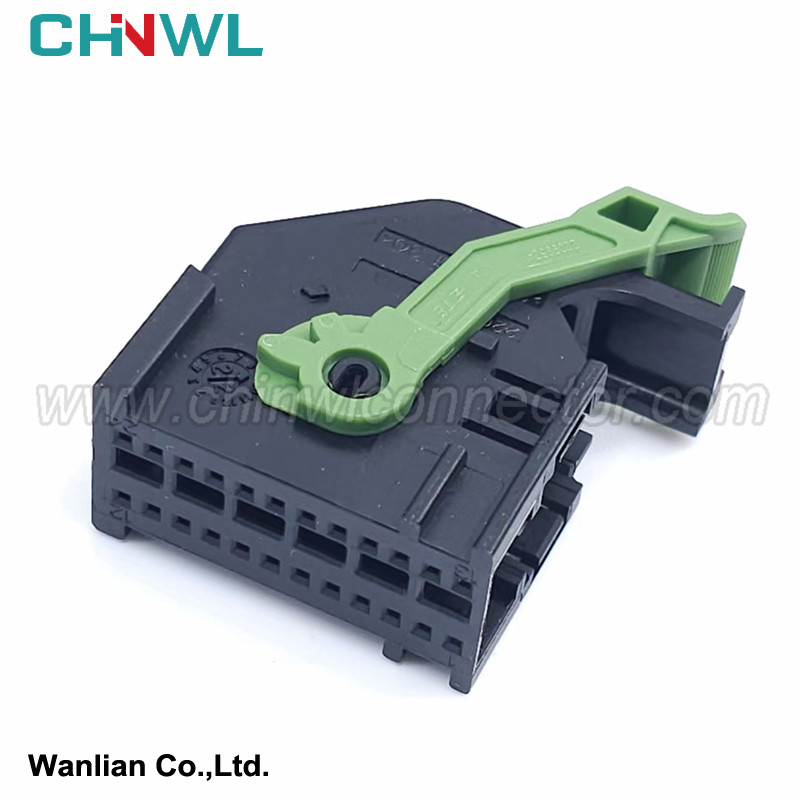

Wanlian #: WL245X1-0.6-11
Mfr. #: 2209954-1 2209953-1 2209952-1
Mating #: WL245X1-0.6-21
Accessories: Terminal Seal
|
Wanlian part number: |
|
WL245X1-0.6-11 |
|
Original number: |
|
2209954-1 2209953-1 2209952-1 |
|
Gender: |
|
Male |
|
Specification: |
|
Housing: PBT+G; PA66+GF; PA66; PBT; Nylon |
|
Type: |
|
Connector |
|
TUV, TS16949, ISO14001, ISO 9001, RoHS conform: |
|
Yes |
|
MOQ: |
|
No minimum order quantity |
|
Supply sample: |
|
Yes |
|
Customized drawing with Decal, Frosted, Print are available as request |
|
Yes |
|
Payment method: |
|
We accept Paypal, TT, Alipay, West Union etc. |
|
Transportation method: |
|
Air Transport: UPS, DHL, FEDEX etc; Sea Transport; Railway Transport; Freight Forwarding etc. |
|
Production Capacity: |
|
1000000pieces/Month |

1. Feeding: Feed the metal sheet into the mold, usually by mechanical feeding or pneumatic feeding. During the feeding process, it is necessary to ensure that the metal sheet enters the mold accurately and ensure that the feeding speed matches the processing speed to avoid defects such as flattening or over-stretching.
2. Stretching: In the stretching station, stress is applied to the metal plate to cause it to deform. During the stretching process, parameters such as stress size, speed and time need to be controlled to avoid problems such as breakage of the metal sheet or uneven stress. Typically hydraulic or mechanical drives are used to apply the tensile force.
3. Demolding: After stretching is completed, slide the finished product out of the mold. Usually pneumatic demoulding or mechanical demoulding is used.
2. Process parameters
The stretching process of precision stamping parts under continuous die requires reasonable setting of process parameters to ensure the quality and dimensional accuracy of finished products. The following are several commonly used process parameters:
1. Tensile force: Tensile force refers to the stress applied to the metal sheet. The magnitude of the stretching force is related to the material properties, size and stretching speed of the sheet metal. Too much stretching force will cause the metal sheet to break, while too little stretching force will cause uneven stress.
2. Tensile speed: Tensile speed refers to the speed of the metal sheet during the stretching process. The choice of stretching speed should be determined according to the performance and shape of the metal sheet. If the stretching speed is too fast, problems such as stress concentration and excessive heating will easily occur, and if the stretching speed is too slow, the production efficiency will be reduced.
3. Stretching time: Stretching time refers to the duration of the metal sheet during the stretching process. The length of stretching time affects the strain and stress distribution of the sheet metal. Too long stretching time will lead to excessive stretching and loss of elasticity of the metal sheet, and too short stretching time will affect the dimensional accuracy of the finished product.
4. Mold clearance: The mold clearance is the distance between the upper mold and the lower mold. The size of the mold gap should be determined according to the thickness and material properties of the metal sheet. Too much mold clearance will result in oversized finished product, while too small mold clearance will result in poor surface quality.
By reasonably setting the above process parameters, the stability and quality control of the precision stamping part drawing process under the continuous mold can be ensured, thereby obtaining high-precision, high-quality drawn products.
Simple instructions:
We have product Catalogue,please contact us on skype,WhatsApp or Email.
If you can't find a product on our website or catalog, We deal with over 10,000 items, our catalog doesn’t cover all products. And we are developing 100+ molds yearly, which means around 10 new products are created in our factory. So don’t go away, just send us your photo or part no, we’ll check for you.